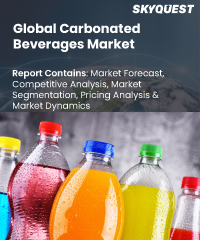
Report ID: SQMIG30G2053

Report ID:
SQMIG30G2053 |
Region:
Global |
Published Date: December, 2024
Pages:
265
|
Tables:
91 |
Figures:
76
North America dominated the global carbonated beverages market. The increased demand for carbonated beverages, altered eating patterns, and an increase in the region's youth population all contribute to the growth of the North American market. Additionally, in order to meet new difficulties, businesses are coming up with new ideas and manufacturing goods while taking into account the concerns about customers' health and wellbeing in the area. Coca-Cola, the market leader, maintains a product sustainability strategy for ongoing brand reliability. These elements are fueling the carbonated beverage market's expansion on the North American continent. For example, in 2022, Two of the largest North American brands of The Coca-Cola Company are making significant efforts to foster a circular economy for plastic packaging. To improve the possibility that the material will be used to make new beverage bottles, Sprite is switching from green to clear plastic and DASANI is introducing bottles that are entirely made of recycled PET plastic (caps and labels are excluded).
Furthermore, starting this summer, the bulk of DASANI bottles sold in the US will be made from 100 percent recycled plastic, including the 20-oz. and 1.5-liter singles as well as the 10-oz. and 12-oz. multipacks. This innovation applies to all DASANI bottles in Canada. The change supports the company's World Without Waste target of using at least 50% recycled material in its bottles and cans by 2030 as well as DASANI's commitment to stop producing the equivalent of 2 billion virgin plastic bottles by 2027 compared to 2021 levels.
The quickest CAGR of more than 6% is anticipated to be recorded in the Middle East and Africa between 2022 and 2028. Rapid product adoption in the area has led to the dominance of nations like Kenya and Nigeria in the market. The market is expanding quickly due to a young population, rising urbanisation, expanding financial sectors, and large manufacturers eyeing the area for product penetration. Furthermore, the population of Africa, which currently makes up 16% of the entire world's population, is projected to increase to 25% by 2050. This provides opportunities for the soft drink industry to expand, especially in East African nations like Kenya, Tanzania, and Uganda. East Africa has an $800 million soft drink market. Nigeria is the region's largest customer. East Africa likely has the most active regional soft drink market, with Kenya having had the highest development over the previous ten years.
Our industry expert will work with you to provide you with customized data in a short amount of time.
REQUEST FREE CUSTOMIZATIONWant to customize this report? This report can be personalized according to your needs. Our analysts and industry experts will work directly with you to understand your requirements and provide you with customized data in a short amount of time. We offer $1000 worth of FREE customization at the time of purchase.

Report ID: SQMIG30G2053